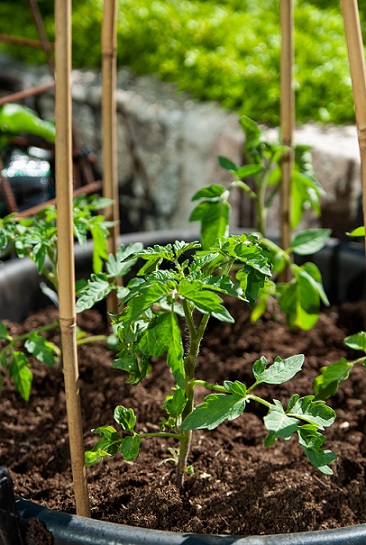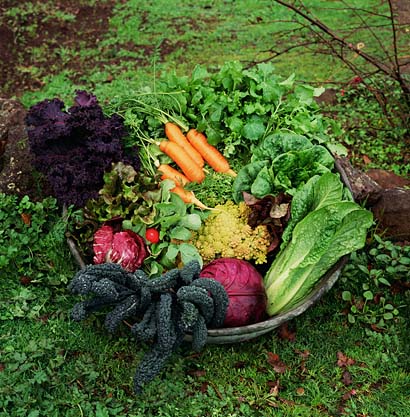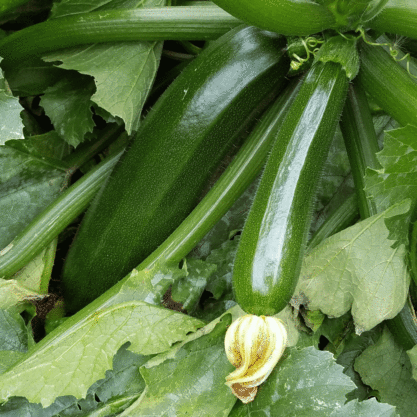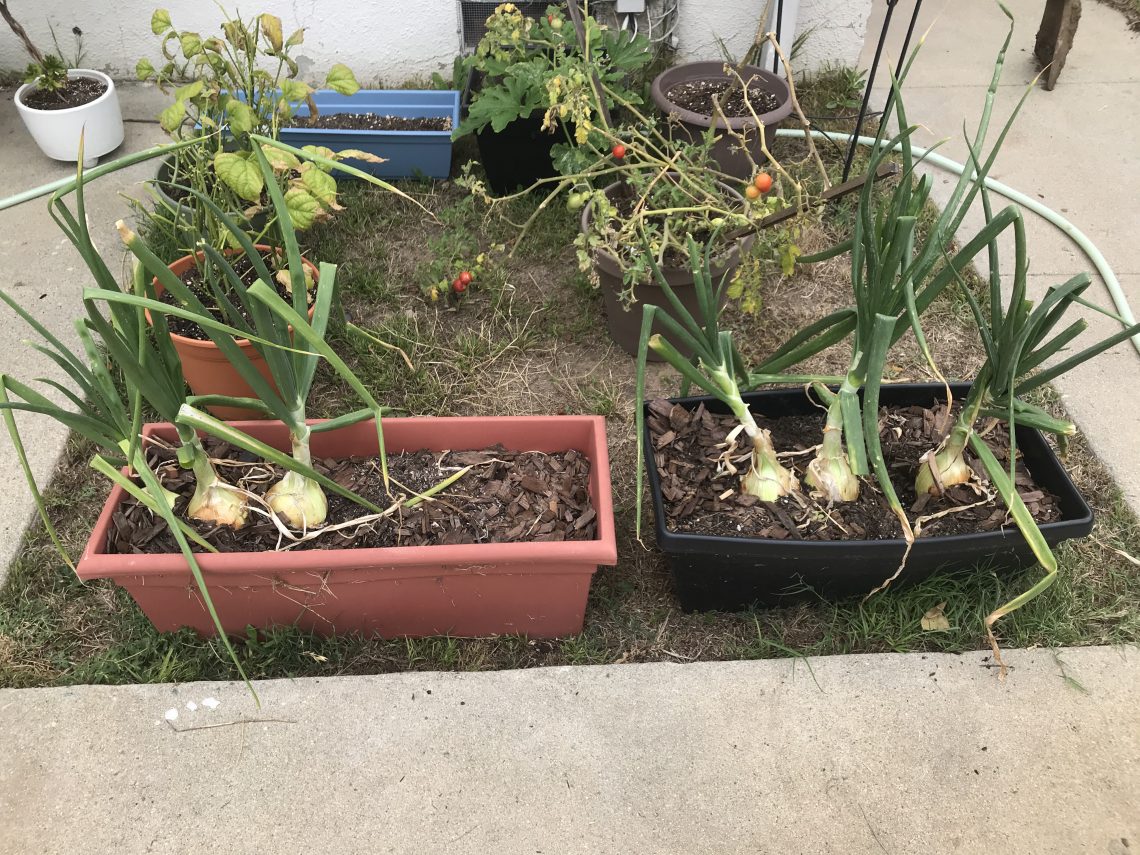-
How to Grow Tomatoes
Tomatoes are the number one grown vegetable in the garden for a reason. Not only are they super versatile, but they’re insanely easy to grow and low-maintenance. Here are a few tips and tricks to get them even more fruitful. Tomatoes are a summer vegetable, which means they require a lot of warmth. They are best planted in late spring or early summer. If you are in zones 9 and above they can even be planted in late winter. A Very Brief Tomato Log I got these around mid-April 2020 when they were 6-8 in. long seedlings from the nursery. In about a few weeks they started to bear fruit.…
-
Spring (and Summer) Gardening: Getting Started
Spring is the ideal time to start experimenting with a vegetable garden. The weather is favorable enough where plants won’t get burned out by excess heat and there’s no risk of any upcoming frost! When garden blogs/books mention preparing for a spring garden, they’re talking about cool season crops like brussels sprouts, cabbage, broccoli and etc. Since the cool air is still lingering from the winter months, those crops are usually sown in late winter/early spring, Tomatoes, peppers and other heat-loving vegetables that we would normally associate with spring time are considered summer crops. Those are usually planted in mid-Spring and will mature by summer time. Depending on where you…
-
Planting Vegtables During the Fall Season
If you just now wanted to get into gardening but you’re in the middle of October, there’s still some time to get planting! Autumn features many seasonal favorites, but of course what you can grow during this time will depend on where you live. I should clarify that the topic of this article is not about HAVING a fall garden. To have a fall garden typically means to sow seeds during the summer months, and once Fall comes around most of what you planted during summer will be ready for harvest. This post is geared towards those who want to plant vegetables DURING the Autumn months and be ready for…
-
How to Grow Squash Plants
Squash has always served me well. They grow quickly and abundantly, which is great for me cause I love adding zucchini to almost anything! Summer squash plants (like zucchini or yellow crookneck squash) are best planted in the spring and can be harvested in the summer months. Winter squash (think butternut or spaghetti squash), are best planted in the summer months and harvested in fall. It’s easy to misconstrue winter squash as being planted in the cooler seasons. On the contrary, they prefer a lot of heat. For example, pumpkins should be planted in late June/July in order for them to be harvested for the August/September months. So if you…
-
How to Grow Onions
What gardener wouldn’t want a staple cooking vegetable like onions growing? It may come as a surprise that it doesn’t take a lot of effort to grow these orbs. Onions typically prefer growing in cooler temperatures in the early stages of their development. It is best to plant onions in late March – April. Those onions should be ready for harvest by midsummer. Nurseries don’t typically sell onion seedlings during the summer because young onion seedlings don’t prosper too well in hot temperatures. But you can still try to plant onion packet seeds in the summer and with some luck it should still grow. Your other alternative is to plant…
-
How to Grow Bell Peppers (and Actually Grow the Fruit Too)
I don’t want to deter anyone from trying to grow bell peppers, but they are one of the most annoying plants I’ve had in the garden. I’ll start to see a little tiny fruit bulb, but most of the time they’ll stay the size of a candy corn. This past summer has been the closest I’ve seen to full grown peppers. Before I go into my trials, let’s get a little more in-depth with these prima donna plants. Peppers need about 8-9 hours of sunlight a day AND they cannot tolerate night-time temperatures below 55 degrees Fahrenheit. The plant will abort blossoms and/or the fruit will be misshapen. If you…
-
Growing Watermelons in a Container
To start, I cannot take credit for this particular project. My Mom actually defied my expectations when she started growing these watermelons. I thought there would be no way you could grow full sized watermelons in medium sized containers. Everyday I see that was wrong. She started from seeds, which admittedly I was never that successful at doing, and after a week they started to sprout. She was very much delighted when she saw her first baby sprout since she had never believed she could grow anything herself and she wanted to take a crack at this whole gardening thing with me. The soil used was regular potting soil. I…
-
April – July Vegetable Garden Progress: The Beginner Gardener’s Journey
As we step into the summer months I wanted to wrap up the spring season by showing progress since I started my plants in April to the beginning of July. This is how my yard looked before I put in my spring plants too what it looks like now: I had been gardening for a couple years so we had this setup for awhile. But when this picture was taken these plants were probably leftover from winter and weren’t really being taken care of. You can see on the left side there is a sad old tomato plant just clinging for dear life, and there wasn’t really anything from the…
-
Whose Zone is it Anyway? A Breakdown of Plant Hardiness Zones, Frost Dates, and Soil pH
So you’ve caught the gardening bug now you’re running to your local garden store. But before you start buying every plant under the sun, there’s three things you must consider: your area’s hardiness zone, frost dates, and testing the acidity of your soil. Let’s start off with hardiness zone. The United States Department of Agriculture (USDA) created a map of all the different climate zones in America. The number of zones range from 1-11, 1 being the coldest and 11 being the most hot and arid. Since I live Los Angeles, my zone is somewhere between 10a-11a. That means the plants I choose must be able to thrive in between…
-
Composting: A Simple Way to Add Rich Soil to your Garden
When I restarted my garden a couple of months ago, I also put in a makeshift compost bin. I’ve never composted before, but after reading about it in the gardening book The Urban Homestead, I decided to start composting myself. I realized that it’s not only easy to start composting, but it so rich in nutrients. Composting is virtually effortless to do, and here is how to get started. All you really need is an enclosed bin. I used an old plastic tub with a lid. You want to put some holes in the bin because the soil needs to aerate, or else it would get too soggy. No need…








